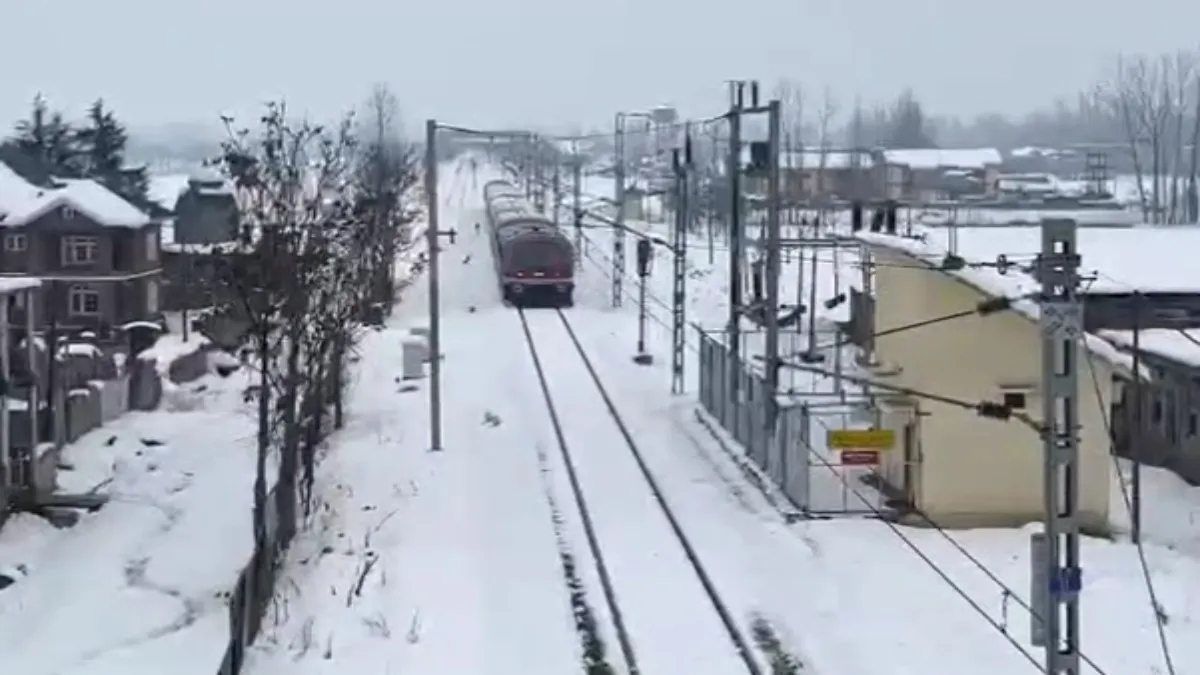 |
|
The recent heavy snowfall in Kashmir has presented a captivating yet challenging scenario. While the picturesque valley draped in a pristine blanket of white has attracted numerous tourists, the severe weather conditions have also disrupted daily life and essential services. The juxtaposition of the mesmerizing winter landscape – trains gliding through snow-covered tracks – against the backdrop of significant logistical hurdles creates a compelling narrative. The initial disruption to air and land transportation, including the complete suspension of train services between Baramulla and Sangaldan following the December 28th snowfall, highlights the power of nature and its impact on even the most well-established infrastructure. The gradual restoration of services, a testament to the resilience of the local authorities and infrastructure, is a crucial element in the ongoing story.
The restoration of the Baramulla to Sangaldan train line represents a significant achievement, enabling the movement of both people and goods. However, the challenges remain considerable. Areas such as Patnitop, Nathatop, and Sanasar in Jammu continue to face significant disruptions due to persistent snowstorms, resulting in power and water outages. The impact on the local population is substantial, highlighting the vulnerabilities of communities dependent on uninterrupted service provision. The weather department's avalanche warnings, coupled with forecasts for continued heavy snowfall, underscore the ongoing risk and the need for sustained vigilance. The closure of the Jammu-Srinagar highway, a crucial artery for transportation, due to landslides and heavy snow accumulation at the New Yug Tunnel, further illustrates the complexity of the situation. The successful evacuation of stranded vehicles from the tunnel, while a positive outcome, speaks to the scale of the disruption and the considerable efforts required to manage the crisis.
The significant temperature drops across the region underscore the intensity of the cold wave. Gulmarg, a popular tourist destination, recorded the lowest minimum temperature at -5.0°C, highlighting the extreme conditions. The impact extends beyond inconvenience, affecting public health and wellbeing. The cold wave's effects on the most vulnerable members of the community demand attention and necessitate effective measures to provide relief and support. The contrast between the stunning scenery attracting tourists and the harsh realities faced by local residents underscores the complex nature of this event. The ongoing efforts to clear roads, restore power and water supply, and manage the effects of the cold wave represent a crucial ongoing response.
The interplay between the economic benefits of tourism during this period and the inherent challenges associated with the extreme weather conditions presents a compelling case study in disaster management and the importance of balancing environmental considerations with economic imperatives. The story of Kashmir's snowfall showcases both the breathtaking beauty of the region and the considerable challenges faced by its inhabitants. It highlights the need for robust infrastructure capable of withstanding harsh weather conditions and effective systems for providing support to those affected by natural disasters. The continued efforts to restore normal life amidst the ongoing snowfall underscore the dedication of local authorities and the resilience of the Kashmiri people. The situation necessitates a careful balance between providing support to those affected while leveraging the economic opportunities presented by the influx of tourists drawn to the region's unique winter beauty.
Looking ahead, the focus must remain on ensuring the safety and wellbeing of the local population while maintaining the accessibility of the region for tourists. This necessitates coordinated efforts by government agencies, emergency services, and the local community. Continuous monitoring of weather patterns and early warning systems are crucial in mitigating the impact of future snowstorms. Investments in infrastructure improvements, including better snow clearance capabilities and resilient power and water supplies, are essential for ensuring future preparedness. The experience of this recent snowfall should serve as a valuable lesson in enhancing resilience and preparedness for similar events in the future. The narrative of Kashmir's winter continues to unfold, a compelling story of beauty, challenge, and human resilience.
Source: Mesmerising video: Train glides through snow-covered Kashmir amid snowfall
